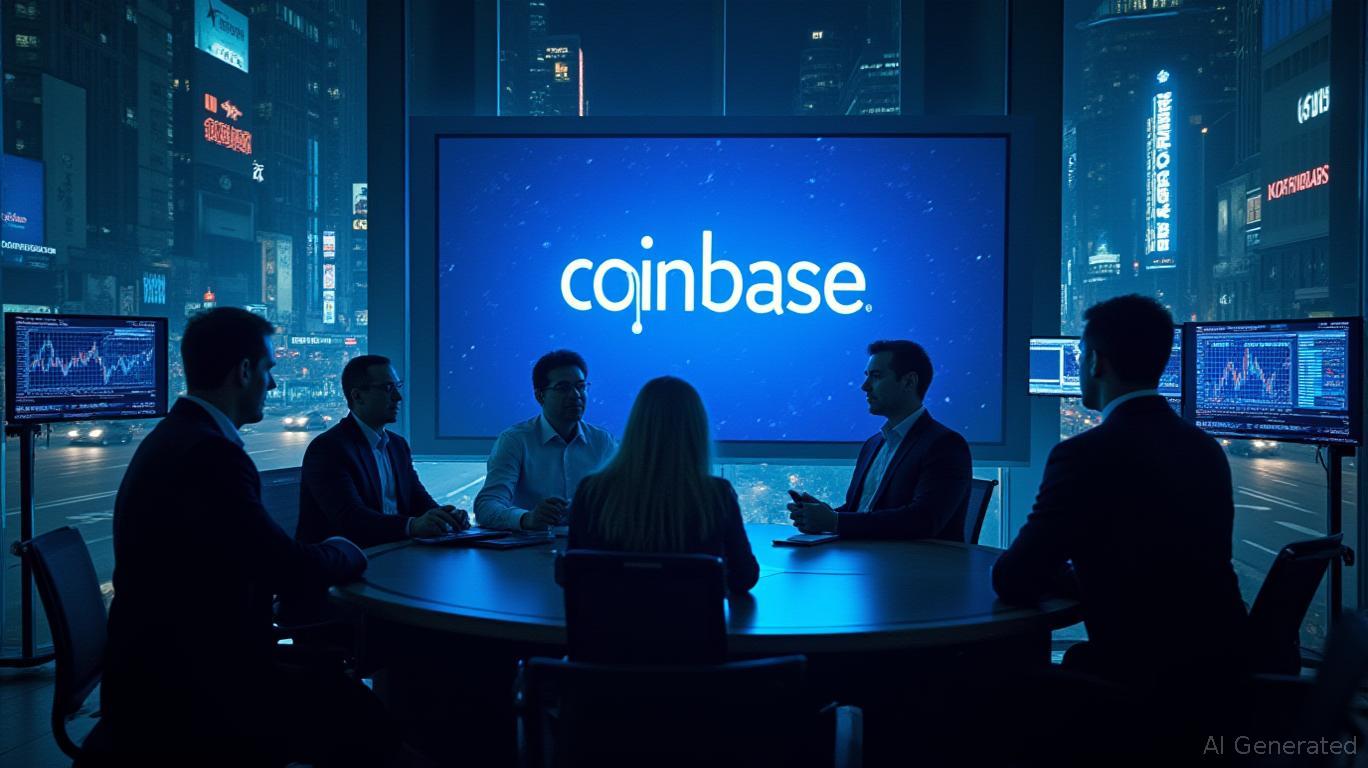USDC's Futures Play: Regulatory Validation and Coinbase's Crypto-Fiat Supremacy
The Commodity Futures Trading Commission's (CFTC) pending approval for USDC to serve as collateral in U.S. futures markets marks a pivotal moment for the crypto-fiat ecosystem. This regulatory greenlight, slated for 2026, positions USDC—the second-largest stablecoin by market cap—as a “true cash equivalent,” slashing settlement risks and boosting liquidity in derivatives trading. For Coinbase, the co-founder of USDC and a CFTC-registered derivatives exchange, this milestone cements its dominance in regulated crypto infrastructure. Pair this with the Senate's recent passage of the GENIUS Act and partnerships with mainstream firms like Shopify and American Express, and the narrative is clear: USDC's institutional adoption is no longer hypothetical—it's structural.
CFTC Approval: USDC as “True Cash Equivalent”

The CFTC's conditional nod for USDC as collateral in futures markets (pending final approval in 2026) is a regulatory win years in the making. By leveraging Coinbase Custody Trust as the custodian and Nodal Clear (a Deutsche Börse subsidiary) for clearing, the partnership ensures compliance with stringent requirements for margining. This integration addresses two critical pain points in traditional finance: settlement delays and counterparty risk.
USDC's near-instant settlement—via its blockchain backbone—eliminates the 2-3 day lag inherent in fiat wire transfers. For futures traders, this means faster capital turnover and reduced exposure to price swings during settlement. Meanwhile, the CFTC's oversight guarantees that USDC reserves (backed 1:1 by dollars and Treasury bills) are auditable and secure, aligning with the GENIUS Act's reserve transparency mandates.
The GENIUS Act: Legal Armor for Mainstream Adoption
The Senate's bipartisan approval of the GENIUS Act in June 2025—despite House hurdles—establishes federal oversight for stablecoins, mandating monthly reserve disclosures and anti-money laundering compliance. This clarity is a lifeline for institutional investors, who previously avoided USDC due to regulatory ambiguity.
For Coinbase, the Act's passage is a tailwind. As the largest USDC issuer (with $61.4B in circulation), it stands to gain from the $2 trillion stablecoin market projected by 2028. The firm's revenue from USDC-related activities already accounts for 50% of its total income, a figure poised to balloon as futures markets adopt USDC.
Merchant Partnerships: From Crypto to Commerce
Coinbase isn't just banking on regulators—it's wooing corporations. Partnerships with Shopify (allowing merchants to accept USDC payments) and American Express (exploring USDC-based rewards programs) signal a shift from niche crypto use cases to everyday finance. These alliances lower fees and speed transactions, making USDC a viable alternative to legacy payment rails like Visa or PayPal.
Why Coinbase Wins
- Regulatory Legitimacy: Its CFTC-registered derivatives exchange and collaboration with Nodal Clear (a CFTC-cleared house) give it a first-mover advantage in regulated crypto markets.
- Network Effects: USDC's $61B market cap and 100% reserve transparency create a flywheel effect—more users → more liquidity → lower fees → more users.
- Strategic Ecosystem: Coinbase's Base blockchain (hosting JPMorgan's JPMD stablecoin) and Earn platform (yielding USDC) lock users into its ecosystem, reducing cross-platform competition.
Risks and Considerations
- House Gridlock: The GENIUS Act must reconcile with the House's STABLE Act, which could delay final passage until 2026.
- Algorithmic Stablecoins: Rivals like DAI (a decentralized stablecoin) pose competition, though USDC's regulated framework offers institutional comfort.
- Yield Restrictions: The GENIUS Act's ban on yield-bearing consumer stablecoins limits a key USDC revenue stream, though Coinbase's institutional focus mitigates this.
Investment Thesis: Buy the Regulatory Tailwind
Coinbase (COIN) is the ultimate beneficiary here. Its stock has already surged on CFTC and GENIUS news, but the full upside is yet to materialize. With USDC's futures market entry and merchant partnerships, Coinbase's valuation could mirror legacy fintechs like PayPal or Square—companies that bridged offline and digital finance.
Recommendation: Accumulate COIN on dips below $150/share. For conservative investors, pair this with Circle (CRYPTO), whose stock (up 22% post-GENIUS) is a pure play on USDC's growth.
Conclusion
USDC's entry into futures markets isn't just a regulatory box ticked—it's a structural shift. By marrying crypto's efficiency with traditional finance's rigor,
is building the rails for the next $2 trillion in stablecoin adoption. For investors, this is a generational play: bet on the firm that's turning “digital dollars” into the backbone of global finance.Final Note: Monitor House negotiations on the GENIUS Act (targeted for August 2025) and CFTC's final approval timeline for USDC in futures markets.

Comments
No comments yet